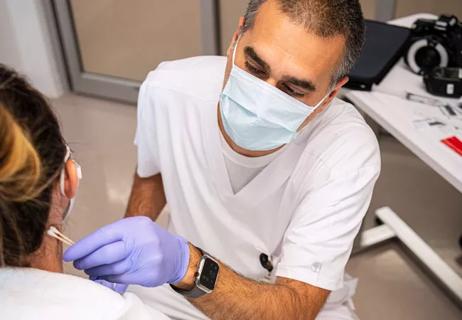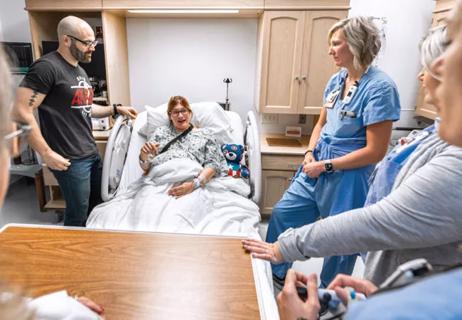Developing the surgical nurses of the future
With the 2018 AORN Global Surgical Conference and Expo right around the corner, many in the surgical nursing field are gearing up to get the latest insights into the newest products and services, compelling research, and unique innovations that are revolutionizing how surgical nurses practice.
Cleveland Clinic is a non-profit academic medical center. Advertising on our site helps support our mission. We do not endorse non-Cleveland Clinic products or services. Policy
In this Q&A, Carol Pehotsky, DNP, RN, NEA-BC, ACNS-BC, CPAN, Associate Chief Nursing Officer of Surgical Services for Cleveland Clinic health system, and Senior Director of Surgical Nursing at Cleveland Clinic main campus, shares her thoughts on leadership strategies that also have a game-changing impact on the future of surgical nursing.
Q: In today’s healthcare climate, what keeps most surgical nurse leaders up at night?
A: More than likely, it’s the looming perioperative nursing shortage. Statistics show perioperative nursing is the fastest aging subset within the nursing profession. We know our perioperative nursing community is getting older and unfortunately, once they leave, there’s a 7 to 15 year vacuum in which very few experienced perioperative nurses are available to take their place – primarily because they weren’t exposed to the OR environment during nursing school.
The challenges we all face are finding new and/or experienced OR nurses and communicating to them that we will train them so they can have a highly successful and rewarding career in surgical nursing with many options – for example, as a registered nurse first assist, as an educator, or as a leader in inpatient and/or ambulatory OR settings.
Q: What can nurse leaders do to help overcome this challenge?
A: Continually recruit, retain and develop perioperative nurses. Proactively hire regardless of openings. Get to know very well how many perioperative nurses and surgical technologists leave your organization each year, and fill those voids in advance. Even if the offset is expected in 6 months, hire good candidates now.
At Cleveland Clinic, we started interviewing by way of a nurse manager panel versus individual interviews. We can better collaborate and hire based on qualities we are looking for in nurses who are open to the OR training, skillset and culture. We are also working on refining our staffing model for how many nurses and surgical technologists are needed to provide 24/7 care in a meaningful way. Using real data, we are factoring in case type, length, complexity and so on to build appropriate staffing models for our ORs, PACUs and ambulatory surgery centers.
Q: What specific strategies do you recommend perioperative nurse leaders implement to better build their future surgical nursing pipelines?
A: Focus on early education and training. At Cleveland Clinic, one of our most successful strategies has been the implementation of a Perioperative Nurse Residency. Unlike many other health systems, we hire nurses with experience into the residency as well as new graduates. Residency co-horts are tailored to the new hire’s needs based on experience level. And as soon as the residency begins, nurses find themselves in the classroom, lab and live environment. The sooner nurses without experience are exposed to the live setting, the sooner they know if surgical nursing is right for them.
Another successful strategy has been our Perioperative Nurse Associate program, a 10-week externship for nurses entering their senior year of nursing school. Externs work with experienced RNs and techs to learn the unique roles a perioperative nurse performs as well as perioperative nursing tasks and skills. We’ve attracted a widely successful number of new graduates through this program.
Finally, train perioperative nurses to circulate and scrub. A lot of organizations have moved away from training nurses on how to scrub because of the pressure to get nurses from hire to competency quickly. However, there is great advantage to providing the fundamental skills needed for scrubbing initially and working to hone them over a longer course of time.

Nurses play pivotal role in patients’ ability to recover in the comfort of their own homes

Advocating for patient safety is imperative in fast-paced surgical settings

Advice for those pursuing a WOC nursing career

Redesigned protocols enhance infection-prevention measures

Longevity in healthcare, personal experiences may provide caregivers with false sense of confidence

Specialized team prioritizes trauma-informed care and evidence collection

Collaborative approach leans on expertise of nurses

TeamBirth aims to improve outcomes by facilitating collaboration between patients and caregivers